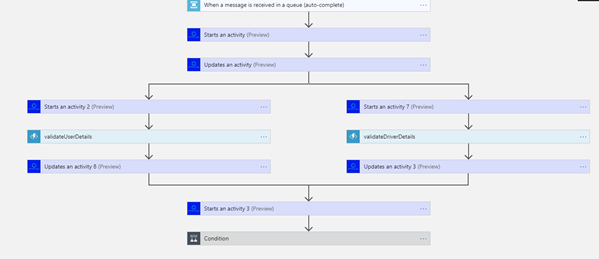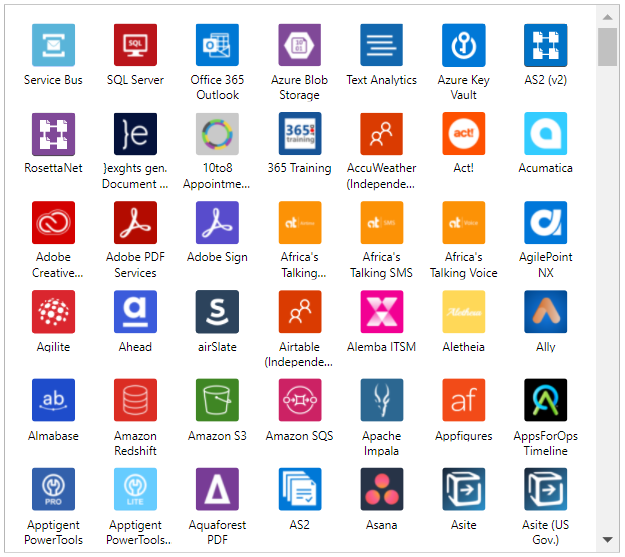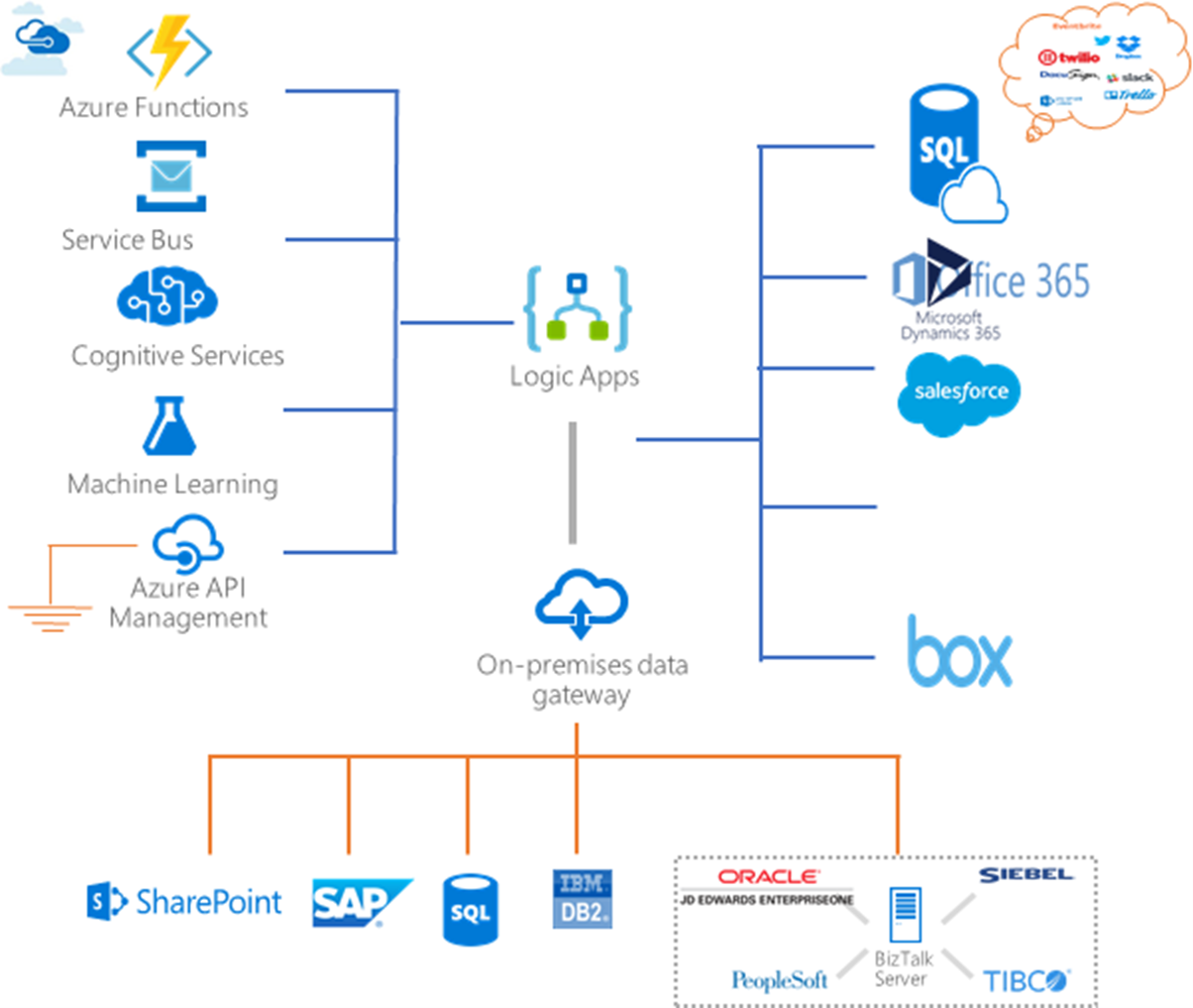What is Logic Apps and its Benefits
What is Logic Apps And why is it so useful? Microsoft services always stays at the top because it innovates rapidly according to the changing times. Suppose there is a ticket that a customer had raised. Through Language Understanding Cognitive Service, the tone of the message could be understood. The issue could be tracked after creating an item on SharePoint. If the customer already exists in the database, you can add them to your salesforce CRM and send an acknowledgment email to the customer. How do we connect all the apps? That is where Logic App (logic apps management) comes in handy.
What are Azure Logic Apps?
Azure Logic Apps is a completely managed integration Platform as a Service (PaaS) which is a cloud-based platform that is used for creating and running automated workflows that integrate services, data, apps, and systems. With this service, you'll quickly develop highly scalable integration solutions for your enterprise and business-to-business (B2B) scenarios. Given below are just a few examples of processes, tasks, and workloads that you will be able to automate using the Azure Logic Apps service:
- when a specific event happens, then schedule and send email notifications using Office 365
- proceeding and sending customer orders across on-premises systems and cloud services
- transfer the uploaded files from an SFTP or FTP server to Azure Storage
- monitor tweets, analyze the sentiment, and build alerts or tasks for items that need review
How do logic apps work?
In a logic app, every workflow starts with a trigger. A trigger gets fired as soon as a condition is met. For example, when a particular event happens or when data meets a particular condition, multiple triggers cover the scheduling capabilities that check how frequently your workflow runs.
Key terms
The following terms are important concepts within the Azure Logic Apps service.
Logic app
A logic app is an Azure resource to create and develop a workflow.
Workflow
A workflow comprises a series of steps that define a task or process. Each workflow starts with one trigger, after which you want to add one or more actions.
For example, below is the image of the Azure Logic App workflow:

Workflow
Action
Inside a workflow, an action is found in each step, and after the trigger, we can define the action to perform a specific task.
We can add multiple actions inside the workflow.
Trigger
A trigger is usually a very primary step in any workflow and specifies the condition for running the workflow.
For example, trigger event might be receiving email on inbox or detecting any file added, modified, deleted in the storage account
Connectors
Connectors in Azure Logic Apps are used to execute certain actions or processes. These connectors are used to connect and work with user data.
There are various connectors present for Azure Logic Apps, including Enterprise connectors (custom logic app connector).

Users can create their own custom connectors or can use pre-defined connectors as well It is also feasible to define connectors using ARM Templates.
Connectors in Azure Logic Apps may behave either as actions or as triggers.
A Holistic View
Using Logic Apps, you will have a complete range of connectors to connect to anything and everything. This permits you to build any integration and business flow on the Azure Platform.

Moreover, you can control the behavior, invoke other services, control the messages, and manage the flow with scopes, conditions, switch cases, and loops.
Logic Apps would be a critical or useful service in your solution’s architecture.
It can be used to execute a runbook, schedule a task for ingesting data, or deletion of data in an Azure storage account.
There are innumerable scenarios in which Logic Apps can be used.
Why use Azure Logic Apps?
The Azure logic app provides the prebuilt Microsoft-managed API connectors and built-in operations, so using these features, you can take leverages to connect and integrate apps, data, services, and systems more comfortably and quickly.
You need to work on designing and implementing the business logic and functionality of your solution, no need to work out a way to access your resources.
There is no need to write any code, but if there is a need to write one, you can do it in snippets using Azure Functions. You can run that code from the workflow. And the good thing is that you can also create code snippets that run in your workflow by using the Inline Code action.
If at all your workflow must interact with events from Azure services, custom apps, or other solutions, you can publish, route, monitor, and publish events with the help of Azure Event Grid. Microsoft Azure manages Azure Logic Apps. No need to worry about hosting, scaling, managing, monitoring, and maintaining solutions built with these services.
When you want to use these capabilities to create "server-less" apps and solutions, you will have to just focus on your core business activities.
To meet your requirement, to make integrations faster and build robust cloud apps use a no-code or codeless framework, and this Azure logic app service automatically scales. Logic Apps supports various scenarios such as:
- Messaging
- Data wrangling
In Azure Portal, to develop the workflow, we can use the Azure Logic Apps workflow designer. Also, we can develop it using Visual Studio Code or Visual Studio.
Save time and make more intelligible complex processes by using the visual design tools in Azure Logic Apps.
We need to begin a workflow with a trigger and can add any number of actions from the connector's gallery.
Connect different systems across numerous environments
You will be able to connect the disparate systems across cloud, on-premises, and hybrid environments in a consistent manner using the Azure Logic app. For, e.g., centralized messaging across APIs and systems using Azure Service Bus, or you can connect a cloud marketing solution to an on-premises billing system. For these scenarios, Azure Logic Apps gives a reliable, quick, and consistent process with reusable and reconfigurable solutions.
Write once, reuse many times
We can create the logic apps as Azure Resource Manager (ARM) Templates through which you can automate deployments across multiple environments and regions.
Built-in Extensibility
If no required connector is present in the logic app to run our code, then we can develop the custom/own code, and it can be called from workflow by using the Azure function. Or we can create our own APIs and custom connectors that we can call from our workflows.
First-class Support for Enterprise Integration and B2B Businesses
Businesses and organizations electronically communicate with one another by making use of industry-standard and various messaging protocols and formats, such as EDIFACT, AS2, X12, and Rosetta Net. We can create the workflows with the help of enterprise integration capabilities supported by Azure Logic Apps that transform the message format used by partners into formats that our organization's systems can simplify and process.
Azure Logic Apps control these exchanges fluently and securely with encryption and digital signatures.
What are the advantages of using Azure Logic Apps?
Azure Logic Apps have exceptional advantages which can solve different business challenges.
Below are some of the advantages
Uncomplicated to define the workflow – User can easily define the workflow with triggers and actions with user-intuitive GUI
Enterprise applications support – Logic Apps support integration with Twitter, Dropbox, Office 365, and more.
Easy for debugging – The user can effortlessly debug the Logic App with the usage of the Trigger and Run history options.
Automation of workflow – By creating the workflow with triggers, it will automatically fire the Logic App when the trigger condition is succeeded.
Integration with on-premises solutions – It is also feasible to integrate the Logic App with on-premises solutions like BizTalk Server, SAP, and many more
DevOps Support - It supports continuous integration (CI) and continuous deployment (CD) DevOps strategy.
Pricing options
logic apps pricing - every logic app type which varies by ability and which environment that are running on (single-tenant, multi-tenant, integration service environment), has different pricing models. For example, the Consumption Pricing Model used by multi-tenant-based logic apps and the fixed pricing model used by integration service environment logic apps.













